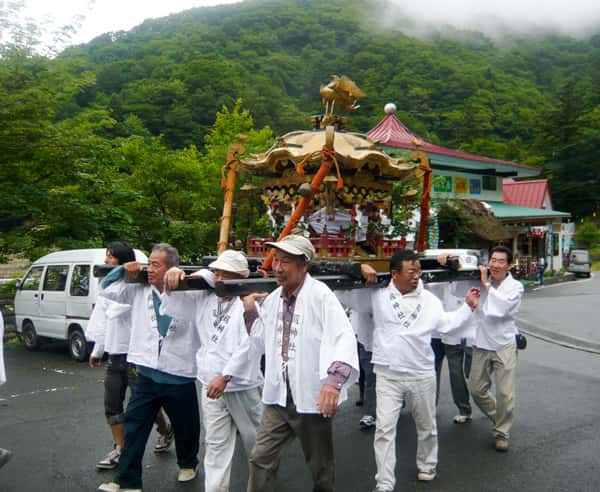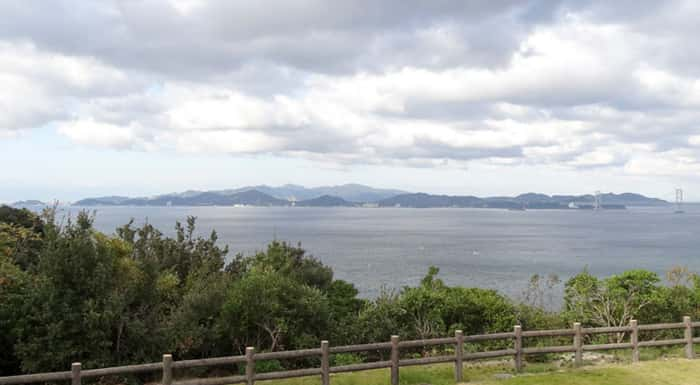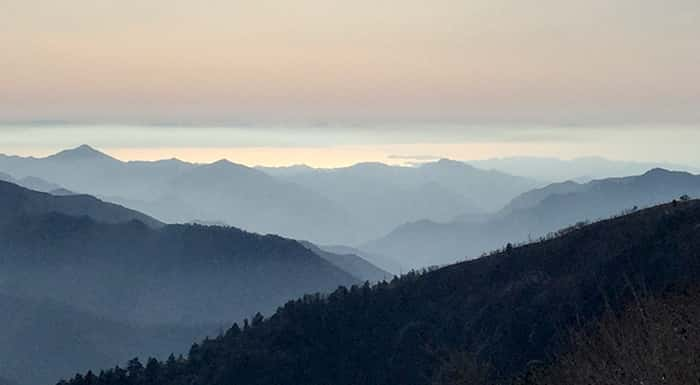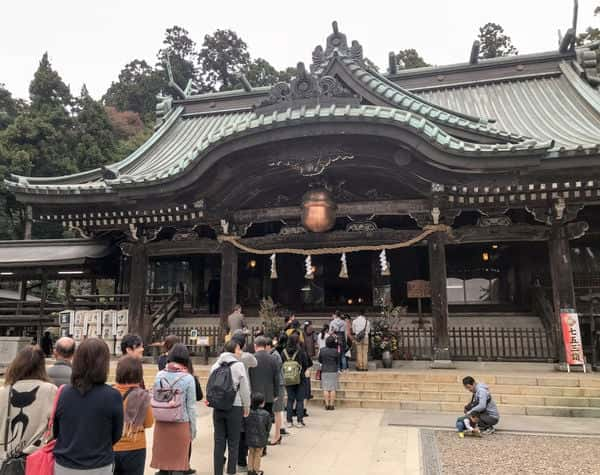目次
What is the criteria in order to become a World Heritage site?
In order for a mountain with spiritual properties to be considered to be called a reizan, it must meet certain criteria. The qualifications based on 10 items of criteria from the UNESCO World Heritage Centre could be used as a guideline or reference when selecting a reizan. As for becoming a world heritage site, it is important to have outstanding universal value. Likewise, if we were to select a reizan today, we could perhaps use 5 out of 10 items of criteria. The following are excerpts of 5 items from the list.
World Heritage Registration Criteria – Excerpt from Japan Federation of UNESCO Associations (https://www.unesco.or.jp/)
- (iii) The place is unique (or at least rare) as evidence of the transmission of the existence of a cultural tradition or civilization, whether existing or extinct.
- (iv) It is a remarkable example of architecture, a collection of architecture, a collection of science and technology, or a landscape that illustrates an important stage in history.
- (v) The place is an outstanding example representing a traditional form of habitation or a form of terrestrial or maritime land use that is characteristic of a culture (or cultures). Or, it is an outstanding example of the interaction between humankind and the environment (especially one whose survival is threatened by irreversible change)
- (vi) The place is directly or substantially related to an event, living tradition, idea, belief, artistic or literary work of outstanding universal value (this criterion should be used in conjunction with other criteria).
- (vii) It encompasses the finest natural phenomena or areas of exceptional natural beauty or aesthetic value.

Reizan Tsurugisan, Mountain opening ceremonyA Japanese reizan is not only a place of exceptional natural beauty, but it is also a place where one can see the remnants of inherited religious cultures from the foot of the mountain to the summit, and one can feel the flow of history from the ancestors who were here long before. Festivals held in the areas surrounding the reizan are part of these long-standing religious traditions, and are closely related to the existence of the mountain itself. People’s interaction with reizan, combined with unique Japanese traditions, has contributed to the mountains’ longstanding status as sacred places. Japan’s famous reizan boast such unique beauty and history that one could perhaps think of them as being good enough to qualify for World Heritage status.
Background of the mountain’s fame as a sacred mountain
In order for a mountain to be recognized as a reizan, it’s not as simple as just using the World Heritage guidelines as a reference. In reality, there are multiple possible conditions and criteria that need to be met in order to be considered an ancient sacred mountain.
First, it is important to note that not only is the deity enshrined at the foot of the mountain or at the summit, but the mountain itself serves as a landmark and builds a ley line that connects it to other sacred mountains, shrines, and landmarks from which it can be used as a base. Since sacred mountains are central to local beliefs, many people have always worshiped them from afar, sometimes climbing their summits to pray to the gods there. In addition, a sacred mountain in ancient times had to be a mountain of unparalleled elevation that could be seen from the sea. Because it could be positioned as an indicator mountain even from a ship, ancient visitors were able to make its presence known to a large number of people in a short period of time.
During the period of the birth of Japan as a nation, the first ancestors of the Japanese crossed the sea to land on the archipelago. They must have sailed to the surrounding islands centering around Honshu and strove to find very high mountains as geographical landmarks. Since their belief was that God was living in the higher mountains, they first focused their attention on higher mountains that could be seen from the sea, and among them, they selected ones that had geographical advantages and ley line connections with other key points on the archipelago. Because of their faith that deities reside at high mountains, they focused on mountains that could be seen from the sea, and in this way, deities were enshrined at the tops of those carefully selected mountains.tThen, shrines were built at the foot of the mountains until eventually entire mountains became recognized as a sacred mountain.
What are the four specific criteria for being considered as a sacred mountain?
There are at least four points of criteria to be verified in order to be recognized as a reizan. Meeting any one of them will further clarify its status as one.
Four selection criteria for being recognized as an ancient reizan
- The whole surrounding area can be seen in the distance
- Deities are enshrined at the summit and foot of the mountain
- They are connected to other sacred places or key points on ley lines
- Names of certain reizan are written in the Chronicles of Japan and the Kojiki
-
A Reizan with far-reaching views of the entire surrounding area
 View of the top of Tsurugisan in the distance from Awaji Island
View of the top of Tsurugisan in the distance from Awaji Island  View of the Kii Channel, Ishima and Kumano .from the peak of Tsurugisan
View of the Kii Channel, Ishima and Kumano .from the peak of Tsurugisan As mentioned above, the ancient ancestors who crossed the sea into the Japanese archipelago traveled by ship to and around the Japanese archipelago, making it an important task to see the terrain from the sea. They sought after high mountains with an elevation high enough that the top of the mountain could be seen a little bit far inland to become landmarks. This meant that the view from the mountain side would be so great that one could see the Japan Sea and the Pacific Ocean from the top of the mountain.
If a deity is to be worshiped in a new land, the location of a holy place must be easily identifiable. Therefore, it was important that it be the highest peak in the area that could be seen from the sea, and that the location, direction, and position of the deity could be easily identified even after landing upon those shores. It was believed that an essential requirement for ancient reizan was to be able to see the terrain from a 360-degree angle and to be able to see the surrounding landscape from a great distance.
-
Reizan with deities enshrined at the summit and foot of the mountain

The line of worshipers waiting
to visit Tsukubasan shrineIf reizan have been worshiped since ancient times, there should be traces or proof of people praying or showing reverence to the gods throughout the mountains over the years. The most obvious example of this are the shrines, which often were built at the foot of the mountain, with a shrine at the top of the mountain as the okumiya or the inner sanctuary. It is important to note that even those who could not climb to the top of a reizan were able to worship their deities at the foot of the mountain, which allowed for more people to approach the mountain deities. Thus, it was common practice on these ancient sacred mountains to worship the deity both at the foot and at the summit of the mountain. -
Sacred Mountains Connected to Other Sacred Sites by Ley Lines
Back in ancient times, reizan were important landmarks on the Japanese archipelago. Their locations were used as bases from which new ports and settlements could be founded, and they were also the locations of shrines. The main method to mark holy locations was through the use of ley lines. By drawing an imaginary straight line called a ley line from the geological point with other sacred sites, shrines and ports were constructed at the intersection of two ley lines.Even the capital of the nation or other prominent places were established on ley lines. Therefore, since reizan were located on ley lines, then one should be able to find multiple shrines, sacred sites, and other sacred mountains all on the same ley lines. . The fact that these places are geographical points on ley linesis evidence of its venerable history and a sign that these mountains were holy.
-
Reizan named in the Chronicles of Japan
In the Chronicles of Japan and the Kojiki, the names of several mountains appear in the Shindai, the Ancient Cays of God to the successive emperors chronicles section. The fact that a mountain’s name appears in the Chronicles itself is public evidence of its importance in a reputable source of information. The ancestors of the Japanese people were also called gods and they were active during these times. Religious components must have played an important role in the background. Ishizuchisan in Shikoku and Ibukisan near Lake Biwa are examples worth mentioning. Both are reizan that are loved by many people to this day. Of course, not all sacred mountains are mentioned in the Chronicles of Japan, so it’s not necessary to list ttheir names. However, the inclusion of their names in the Chronicles makes them more credible as Japan’s holy reizan.
